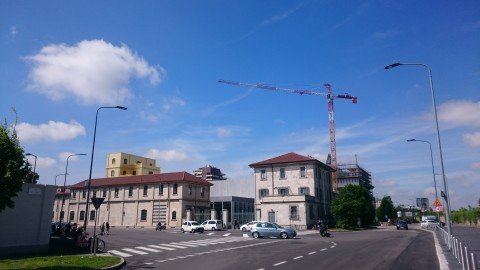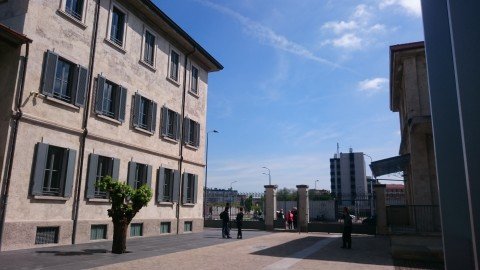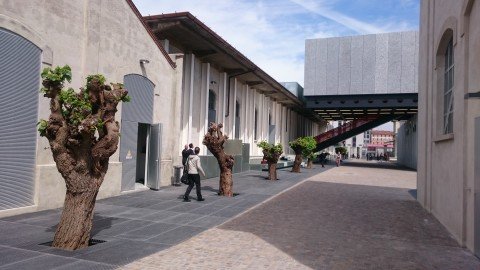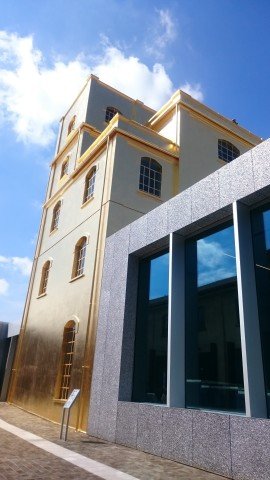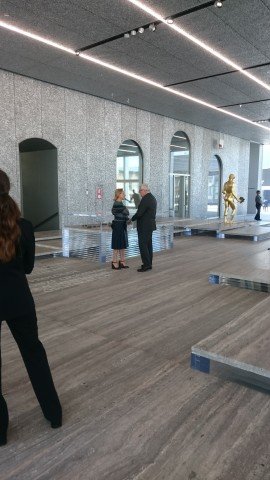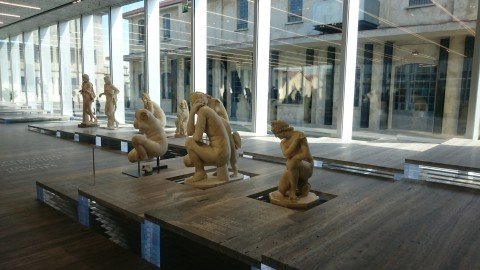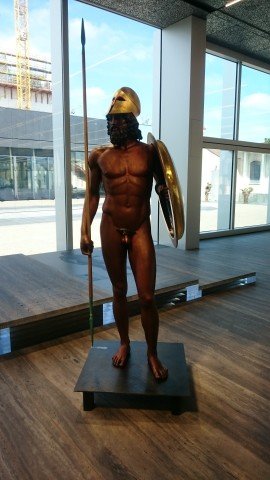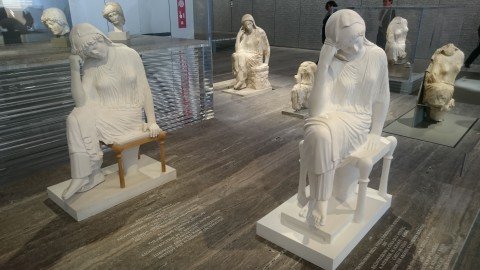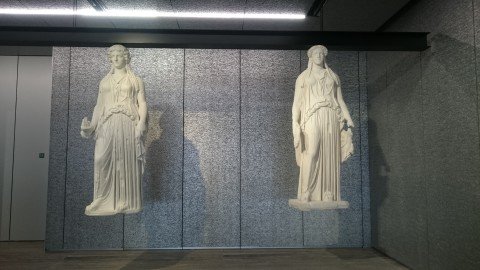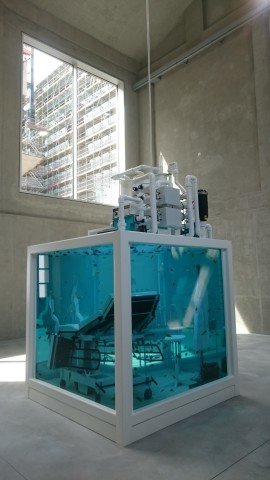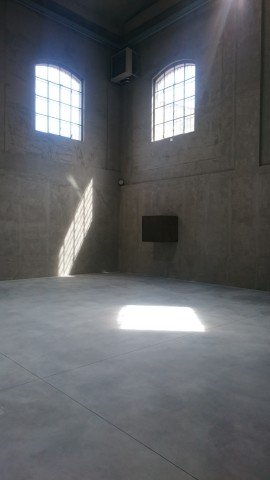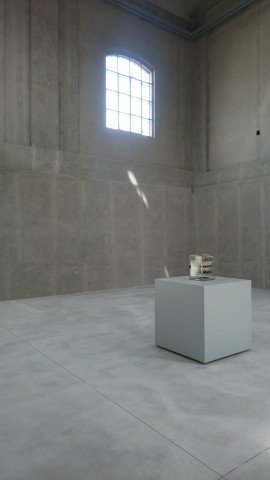The new Fondazione Prada opens, with a potential political action
- Fondazione Prada, Milan.
- Fondazione Prada, entrance
- Fondazione Prada, North Gallery.
- Fondazione Prada, Podium.
- Fondazione Prada, Serial Classic, installation view, ground floor.
- Fondazione Prada, Serial Classic, installation view, ground floor.
- Fondazione Prada, Serial Classic, installation view, ground floor.
- Fondazione Prada, Serial Classic, first floor, installation view.
- Fondazione Prada, Serial Classic, first floor, installation view.
- Damin Hirst, Lost Love, 2006. Installation view at Fondazione Prada, Cisterna.
- 1 metro cubo di terra, 1967. Installation view at Fondazione Prada, Cisterna.
- Case II, 1968. Installation view at Fondazione Prada, Cisterna.
“This is a collection of spaces” claimed Rem Koolhaas a few hours ago while presenting to the international press the new Prada Foundation, at the presence of the Italian Ministry of Culture Dario Franceschini (the Prime Minister Matteo Renzi is instead waited for tomorrow afternoon). But probably Koolhaas wasn’t just talking about the building, a former distillery dating back to the dawn of the last century that OMA transformed into a sort of contemporary castle of wonders carefully adding new elements to the old structure. At the basis of what is by now the main contemporary art institution in town there is effectively an holistic approach which will indeed respond to many activities at the same time: especially art, cinema, dance, fashion, and philosophy.
In such a conceptual frame, it comes natural to read “Serial Classic”, the opening exhibition conceived by archaeologist Salvatore Settis, not simply as a open door on art history and tradition. It is rather the evidence this dressy aggregation of space – and time – is the effect of a specific mentality. Presenting the show, which explores the ambivalent relationship between originality and imitation in Roman culture, Settis asserted that Miuccia Prada’s intention was to make a political action. And we know that going to an exhibition could very well be a political action too.
It follows that, if the rediscovery of classic art, from Renaissance to Neoclassic, was mainly supported by cultural leaders to celebrate the role of beauty, culture, and social values associated to the Greek art, the messages this political act conveys could be essentially three: 1. don’t forget where you come from; 2. everything turns to be contemporary in the proper context; 3. be aware of the difference between originals and copies.
“Serial classics” occupies two levels of the central building, called the Podium. Especially on the second floor, the setting reminds of the Louvre Lens by SANAA, even if here the room is not so wide and cold. To an educated eye the plexiglass panels, glasses and marble surfaces used by OMA may appear too similar to a fashion shop interior. But it must be said that visiting this collection of sculptures in an almost natural light (especially on the ground floor), and with such an unconventional background, is a remarkable visual experience, comparable only to the one you can live in the new Acropolis Museum in Athens.
Part of what you see through the embracing window walls is a pre-existing four-story building, now entirely and meticulously covered in golden leaf (drainpipes included). It hosts a collection of main works by Robert Gober and two installations by Louise Bourgeois (on the first floor).
Then there are two more galleries, a cinema, an underground area (now hosting an installation by Thomas Demand presented in Venice in 2007, Progetto Grottesco), and the Luce Bar. A second tower dedicated to specific projects is still under construction. But the real remarkable space is the one called the Cisterna, another pre-existing building made up of three vertical structures: rooms with very high ceiling that are illuminated by huge windows placed just under the roof, approximately 4 meters from the floor. They call it the Trittico. The central room now contains an early and extraordinary Damien Hirst (Lost Love, 2000). In the other two rooms are Eva Hesse (Case II, 1968), and Pino Pascali (1 metro cubo di terra, 1967).
May 13, 2015

